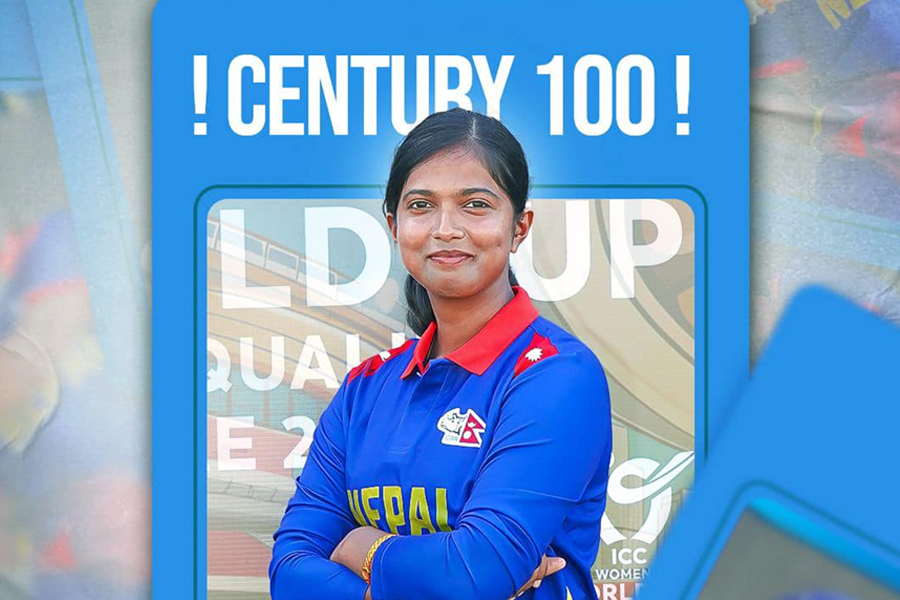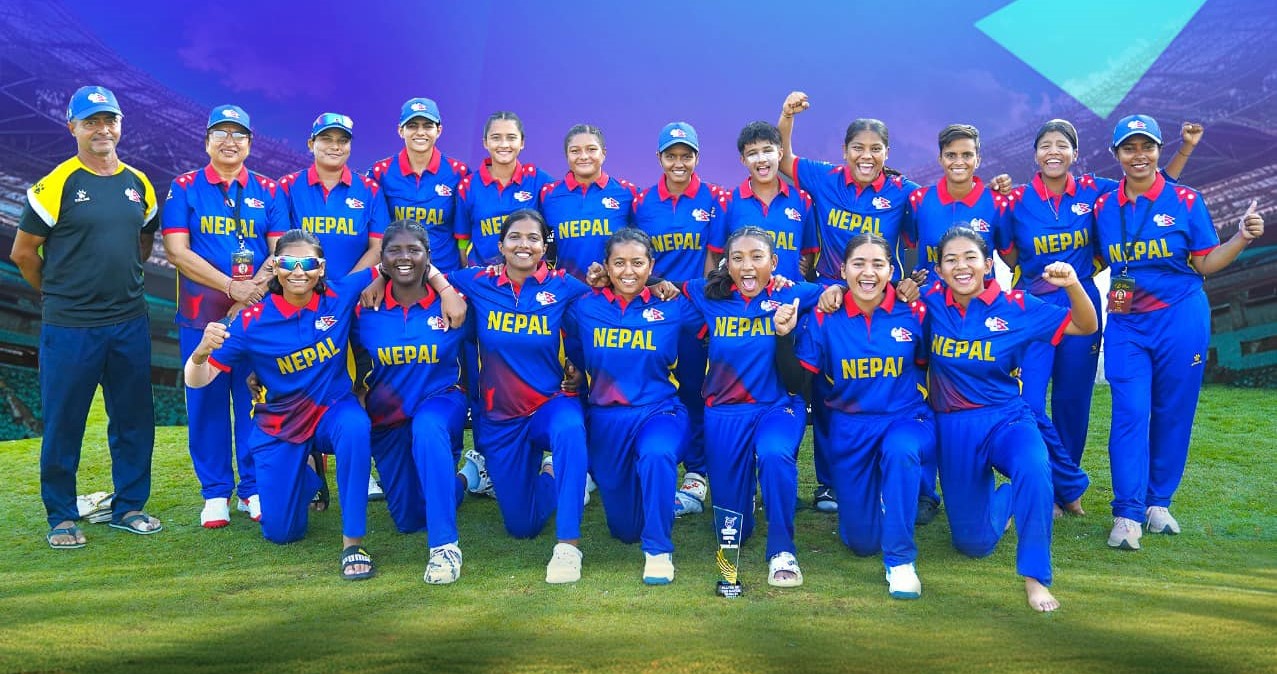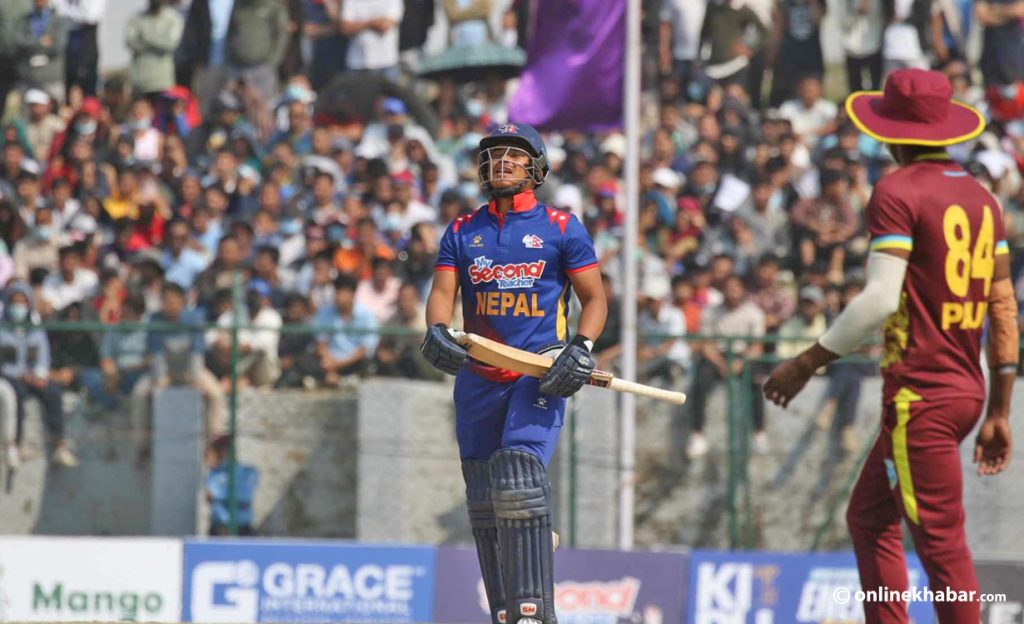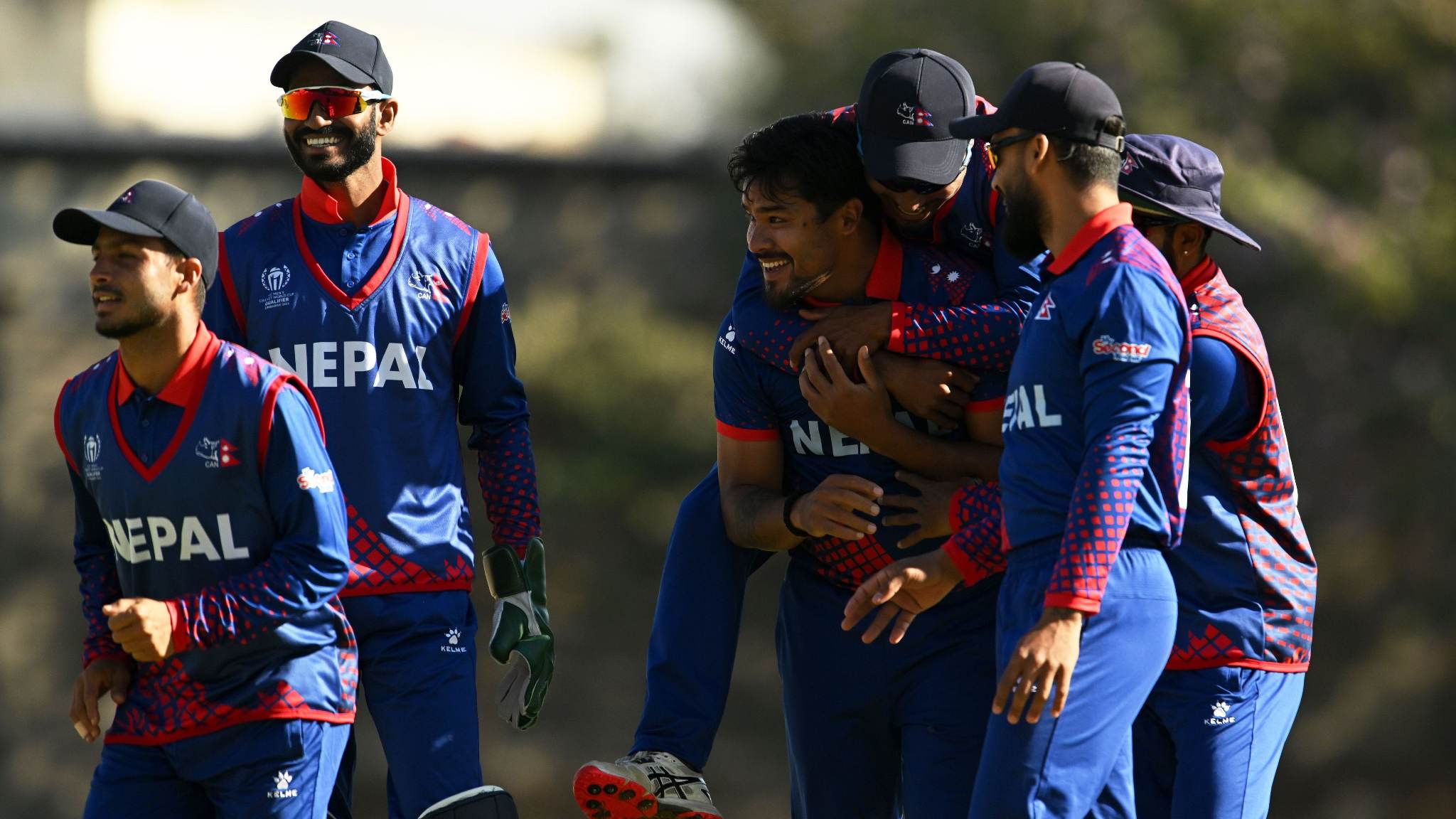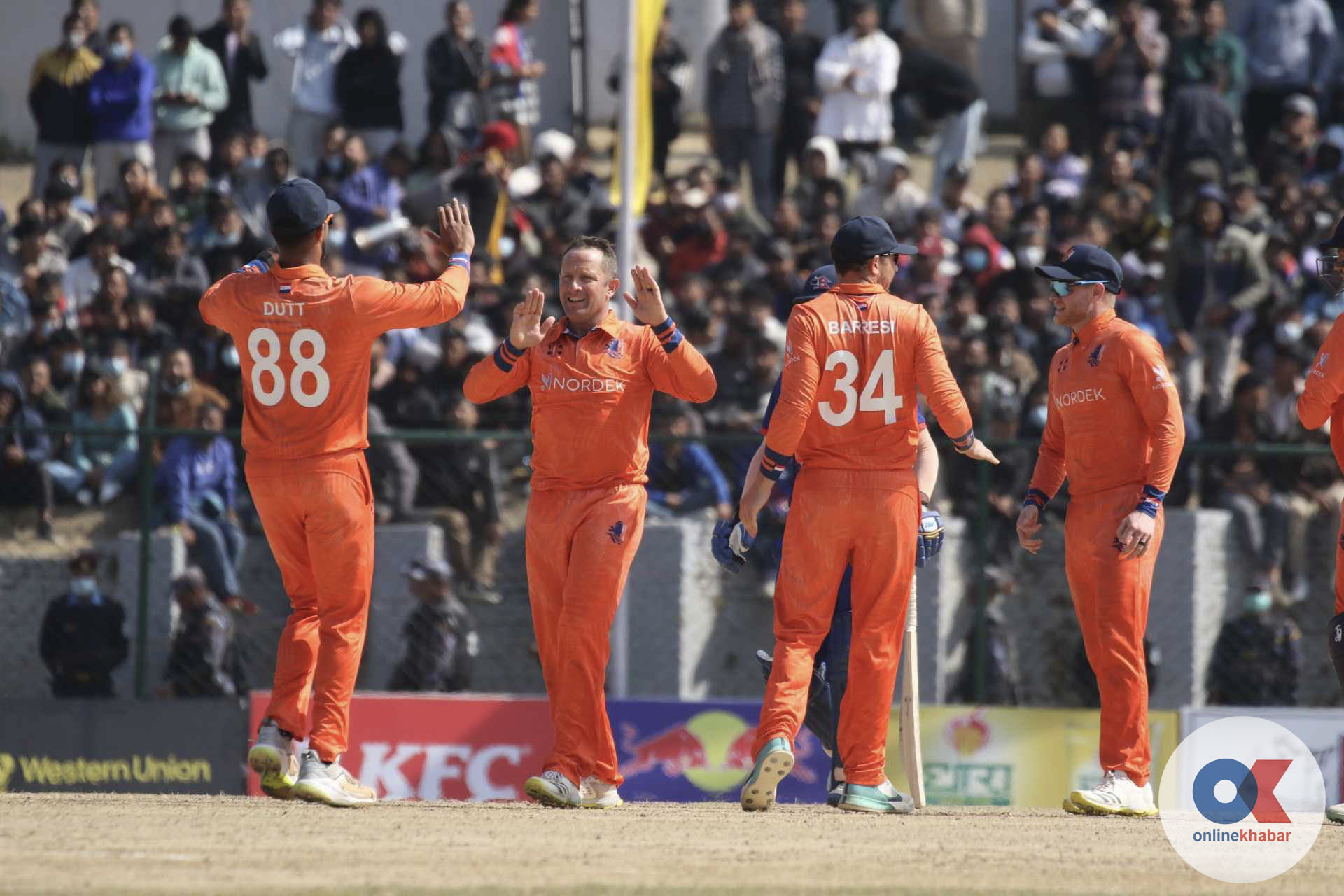
It was in 2014 when the actual ignition of cricket culture started in Nepal. This had a lot to do with Nepal playing its first-ever T20 World Cup. Nepal caught the eye of the cricketing world with the performance as well. Nepal’s cricketing notion took a significant turn as the nation debuted in the T20 World Cup held in Bangladesh. This landmark moment not only thrust Nepal onto the global cricketing stage but also underscored the nation’s burgeoning talent and unwavering passion for the sport.
Despite registering commendable victories against Afghanistan and Hong Kong, Nepal’s journey in the tournament ended prematurely with a loss against Bangladesh, narrowly missing out on qualification for the subsequent stages. As Nepal gears up for its T20 World Cup campaign in 2024, it’s imperative to delve into the intricacies of its cricketing evolution, the challenges overcome, and the aspirations that drive the team forward.
A journey of triumphs and trials
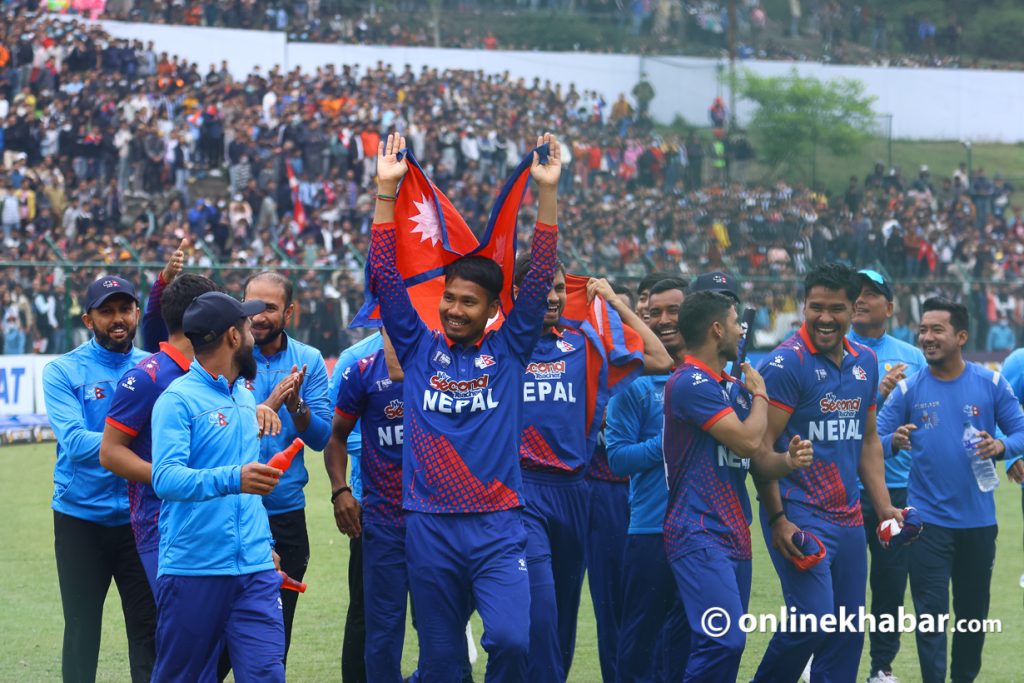
Nepal’s tryst with cricket dates back to its recognition as an Associate Member by the International Cricket Council (ICC) in 1996. Since then, the nation has embarked on a remarkable journey, marked by triumphs and trials alike. From humble beginnings in Division Five to achieving the coveted status of an ODI nation, Nepal’s ascent in the cricketing arena is a testament to perseverance and passion. Apart from World Cup participation, other key milestones, such as finishing third in ICC WCL Division 5 in 2008 and clinching championship titles in subsequent divisions, highlight Nepal’s steady progression on the global stage. Notably, the unforgettable heroics of Karan KC against Canada in 2018, which propelled Nepal into World Cup qualifiers, remain etched in the memory of every Nepali cricket supporter.
The term “Cardiac Kids” has become synonymous with the Nepali cricket team, signifying their penchant for delivering nail-biting performances and dramatic victories. The term encapsulates the team’s ability to thrive under pressure, often turning seemingly dire situations into moments of triumph. The nickname emerged as a tribute to the team’s knack for pulling off thrilling victories, often in the match’s final moments. Throughout their cricketing journey, the Nepali team has been involved in numerous matches characterised by dramatic twists and turns. These include instances where the team chased down improbable targets, defended modest totals, or staged remarkable comebacks from seemingly unwinnable positions.
Key Moments in the History of Nepali Cricket
- 1996: Awarded Associate Member Status
- 2008: Finished 3rd in ICC WCL Division 5
- 2010: Champions of WCL Division 5
- 2012: Champions of WCL Division 4
- 2013: Champions of WCL Division 3
- 2013: Qualified for World Cup Qualifier
- 2014: T20 World Cup Debut
- 2015: Qualified for WCL League Championship
- 2018: Runner-up in WCL Division 2
- 2018: World Cup Qualifier 2019 Participants
- 2018: Attained ODI Status
- 2023: Participated in the Asia Cup against India and Pakistan
Nepal is gearing up for T20 World Cup 2024 after a decade-long wait. Despite intermittent displays of promise, Nepal faced challenges in consistently translating potential into results.
The voyage of Nepali cricket in between the two World Cup appearances had a lot of twists and turns in it. The suspension of the Cricket Association of Nepal (CAN) in 2016 by the International Cricket Council (ICC) due to governmental interference posed a significant obstacle. Despite the administrative upheaval, Nepal continued to participate in international cricket under close ICC scrutiny. Even the team selection was overseen by a committee comprising an ICC representative alongside the coach and captain.
Coaching transitions and evolution

Significant transformations have transpired since Nepal’s last World Cup qualification. From the tenure of Pubudu Dassanayake to the current mentoring of Monty Desai, each coach has left an indelible mark on the team’s trajectory.
Nepal made their mark in the 2014 World Cup under the guidance of Pubudu Dassanayake. Since his departure, the team has been under the guardianship of distinguished coaches including Umesh Patwal, Manoj Prabhakar, and Dav Whatmore, before being led by Monty Desai in the present. Prior to Dassanayake’s tenure, the foundation of Nepali cricket was laid by the esteemed Sri Lankan coach Roy Dias during the sport’s nascent stages in the country.
The strategic sharpness of coaches like Dav Whatmore has been instrumental in refining Nepal’s batting prowess, fostering a more aggressive and assertive style of play. The emergence of players like Bhurtel, Aasif, and Kushal Malla as batting stalwarts exemplifies the transformative impact of coaching interventions.
Rise and fall of franchise based T20 leagues
A transformative phase emerged in Nepali domestic cricket with the rise of numerous local franchise-based T20 tournaments across various cities in the Himalayan nation. Leagues in Kathmandu, Pokhara, and Dhangadi, in particular, played a crucial role in elevating the professionalism of the sport.
This surge in popularity attracted corporate houses and sponsors, providing cricketers with opportunities to sustain themselves through their passion for the game. Subsequently, the announcement by the Cricket Association of Nepal (CAN) to organise the Nepal Premier League (NPL) marked a significant shift, leading to a consolidation of franchise-based cricket activities and a move away from other parallel leagues.
A tale of two generations
Comparing the past and present generations of Nepali cricketers unveils a stark contrast in resources, facilities, and opportunities. The struggles endured by pioneers like Paras Khadka, Binod Das, Gyanendra Malla, Shakti Gauchan, Basanta Regmi, Sharad Vesawkar and others to carve a niche for Nepali cricket amidst infrastructural limitations are well-documented. However, the current crop of players benefits from improved facilities and infrastructure, albeit amidst ongoing challenges.
Despite these disparities, both generations share a common thread of resilience, determination, and a deep-seated passion for representing Nepal on the global cricketing stage. The experiences gleaned from playing against cricketing powerhouses in tournaments like the Asia Cup and World Cup qualifiers have galvanised the team’s resolve to compete at the highest level.
Amidst these changes, all-rounder Sompal Kami stands as a testament to continuity and experience, bridging the 2014 squad with the present. Sompal is the only player from the Nepal squad in 2014 who is also playing in this edition. His journey from a young talent to a seasoned campaigner mirrors Nepal’s evolution on the global cricketing stage.
Role of the fans: 12th Man
As cricket enthusiasts, we immerse ourselves in every aspect of the game, meticulously analysing player performances and debating their suitability for the squad. We dedicate ourselves to following every ball bowled in matches where Nepal competes, absorbing media coverage, interviews, and scorecards with unwavering passion. Yet, amid the celebration of our cricketers’ successes, there exists a realm of unseen activities within Nepali cricket—an undercurrent of protocols and endeavours that often escape our notice.
It’s time to broaden our perspective beyond mere performance statistics and match coverage. While these aspects remain vital, we must delve deeper into the intricate workings behind the scenes, uncovering the untold stories that shape Nepali cricket behind closed doors. As fans, it’s essential to acknowledge these behind-the-scenes dynamics and their impact on the sport’s trajectory.
The exposure gained from encounters with cricketing powerhouses like India, Pakistan, and West Indies has instilled a newfound belief in the squad. As Nepal prepares to embark on its T20 World Cup journey once again, the collective experiences and aspirations of its players symbolise the nation’s enduring spirit and determination to make an impact on the global stage.
The team has demonstrated remarkable confidence in their ability to compete at the highest level of cricket, showcasing their prowess with quality performances on the field. As the Nepali team embarks on their World Cup journey, the whole country will be pouring heartfelt wishes for a successful outing. May they seize this opportunity to learn, grow, and further hone their skills, ensuring that the next World Cup appearance doesn’t require another decade-long wait. Here’s to a stellar performance and continued advancement in Nepali cricket’s journey on the global stage.




